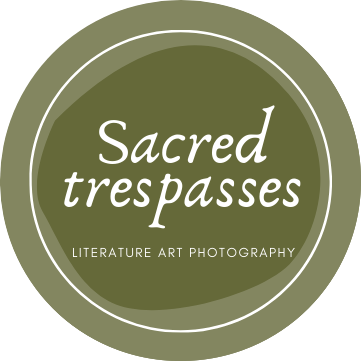Words and paintings by Angie de Latour
One of my painting lecturers at art school believed that artists each had a dominant theme to uncover and develop, rather like a life vocation. He said that although I was unaware of it, my theme was already biting me on the ankle. Like an elusive recurring dream, it began to emerge out of the painting process and continues to reappear and evolve.
The ongoing focus of my painting practice is to explore ways of depicting the fixed yet temporal state of liminal space within which a figure or object exists. This space may inhabit the reflection of a table surface or pour itself into the bottomless immensity of the virtual world via a phone screen. It may also hang between the tracery of branches against a heavy sky in a shelter belt of trees. Although it is a wildly romantic idea, I believe that painting as a medium allows a transfer of the artist’s soul onto the canvas; containing it in a timeless presence within the marks made on its surface.
When choosing the subject for a painting project, I use photography to start building visual source material. I also paint small loose watercolour studies to expand palette options for later reference. Because my photographic skills are limited, I find the subtle colour changes that occur under different light conditions more reliably recorded in paint. I do not set out with a prescriptive intention to create a mimetic replica of a photograph, but rather use the painting process to allow an unanticipated ‘something’ to come into being.
Melbourne has produced more than its share of painters who portray a brooding melancholy in their work. Several years ago, I was persuaded by one of these artists that my painting had an undeniably Gothic sensibility and this led to an MFA on the subject of the Gothic mode in antipodean visual culture. The Gothic in visual art is difficult to pin down; it has a slippery open-endedness that might also be read as Romantic or Sublime, depending on the viewer. Having researched the Gothic, I am not convinced that my work belongs exclusively in that camp, so welcome mutable parameter interpretations.
For inspiration and help with creative block I can always rely on Jane Campion, David Lynch, John Berger, Sviatoslav Richter, Keats’s Negative Capability and old elm, oak and willow trees.
Repo #1
Oil on linen, 41 x 51 cm
Table #2
Oil on linen, 31 x 36 cm
Repo #3
Oil on linen, 41 x 51 cm
Chanel
Oil on linen, 76 x 102 cm
Pluto
Oil on linen, 31 x 36 cm
Shelterbelt #3
Oil on linen, 122 x 152 cm
The Devil is in the Detail #2
Oil on linen, 31 x 36 cm
Blue #10
Oil on linen, 31 x 36 cm
Bernhard Sachs in Menzel's Studio
Oil on linen, 76 x 102 cm
Shelterbelt #1
Oil on linen, 122 x 152 cm
See more of Angie de Latour's work on her website.











